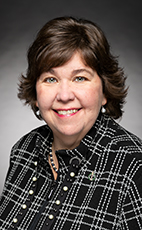44th Parl. 1st Sess.
November 28, 2023
- 11:53:45 a.m.
- Watch
- Read Aloud
Thank you very much.
I have several questions, but I would like my first question to go to you, Ms. Glassco. You spoke specifically about gender and about the particular discrimination against girls with disabilities. One of the things you mentioned was the higher proportion of these girls who face gender-based violence and early and forced marriage. I was wondering if you could elaborate a little bit on the differences in gender, and specifically whether it is also important to have not just education for these girls, or for gender non-conforming individuals, but also sexual health education.
99 words
- Hear!
- Rabble!
- add
- star_border
- share
- 11:54:29 a.m.
- Watch
- Read Aloud
Indeed, gender is a huge issue. Multi-country estimates show that girls with disabilities are more likely to be out of school than boys with disabilities, and they face all of these other significant barriers, some of which you referenced. One of them is health care and access to sexual and reproductive rights. There are a whole variety of other access issues they are facing in terms of health care specifically.
Girls with disabilities and girls in general, as you mentioned, experience heightened rates of gender-based violence. They are also facing communication and cultural barriers, due to stigma, in reporting incidents and accessing referral services where they do exist. This is all compounded in special education institutions, where girls with disabilities are often more isolated from their support networks. There are likely to be significant ramifications for survivors, related to mental health, motivation and access to school. Even if the infrastructure is there, the barriers presented to them in terms of their ability to have access and speak out verbally, and the cultural implications, are huge, so they just don't do it.
This stigma and these cultural barriers are seen at the community level. They are seen at the family level and they are seen with the parents. Parents are reluctant to send their daughters to school. Of course, when there are economic hardships or the crisis situation I spoke to earlier, these are all barriers that girls are basically confronted with daily.
245 words
- Hear!
- Rabble!
- add
- star_border
- share
- 11:56:49 a.m.
- Watch
- Read Aloud
Thank you very much for that.
My next question is for Ms. Delorme.
One of the things you mentioned that struck me was about early learning. When we talk about education, we usually think about grade school. We are not necessarily looking at preschool or early learning. I wonder if you could elaborate on that.
55 words
- Hear!
- Rabble!
- add
- star_border
- share
- 11:57:11 a.m.
- Watch
- Read Aloud
I will let my colleague Julia help me along with that, please.
Go ahead, Julia. Thanks for being here with me.
21 words
- Hear!
- Rabble!
- add
- star_border
- share
- 11:57:19 a.m.
- Watch
- Read Aloud
It's a good question, and sometimes early years education is different in different contexts, of course. There's a mix, a good hybrid mix, between ECD, or early years learning, and formal education marrying up with pre-primary and primary education. These days, in many countries in Africa and Asia, pre-primary education is often in the same school as primary education, so we're talking about sometimes starting four-year-olds or five-year-olds within the same formal setting as the primary. Then there are some settings where it might be even earlier.
Obviously, we're talking more about how to help transition between non-formal settings and community-based education initiatives, because often it's those children who drop off the radar, especially children with disabilities in the early years. Maybe early ECD providers and health care providers might be able to track those children. They get to three years old or four years old and then they're off the radar, and it's a really key stage to keep hold of them and track them. Otherwise, they get to six years old or seven years old, ready for primary, and we can't find them anymore. We often find early intervention is also key in terms of development, so if you do everything early on, you have better and longer-term outcomes. However, it's also about being able to continue with those children and support them through the transition from the early years services through to primary education. Children with developmental disabilities in particular can really benefit from that, but so can all children with disabilities and without, in fact.
Another really quick point is that children with and without disabilities merge really well together at that age group. I've seen it myself in those early settings. They don't notice that the child has different needs; they absolutely don't bat an eyelid. You can really promote inclusion in these younger age groups, which can be a really good model for older groups, where that might be more of a challenge. You can really promote inclusion in society by having inclusive early years settings where children are able to play and get along with each other.
375 words
- Hear!
- Rabble!
- add
- star_border
- share
- 11:59:38 a.m.
- Watch
- Read Aloud
Thank you so much.
I don't know if I have time for a question to CARE.
17 words
- Hear!
- Rabble!
- add
- star_border
- share
- 11:59:41 a.m.
- Watch
- Read Aloud
You have about a minute, Ms. Vandenbeld.
7 words
- Hear!
- Rabble!
- add
- star_border
- share
- 11:59:43 a.m.
- Watch
- Read Aloud
Okay.
We have one minute to talk about something that you and others have also mentioned, which is the stigma. It's one thing to provide education, to provide resources and to provide funding, but ending stigma is a much more difficult thing. In 45 seconds, could you let us know how to do that?
Thank you.
57 words
- Hear!
- Rabble!
- add
- star_border
- share
- 12:00:00 p.m.
- Watch
- Read Aloud
Thank you so much for that question.
That is the crux of the matter. It's the belief that it is indeed beneficial to have children with disabilities included in the education that is offered.
Stigma happens at both levels. It has to be addressed at the community level. Therefore, the response that is required is not just in the education system but in the social structure as well. It's also within the education system right from the top, up to the teachers who are providing the education at the school level. As a system, it's about believing there is a need for addressing this issue and then supporting the frontline teachers delivering that education, and then at the community level. All three levels are needed.
128 words
- Hear!
- Rabble!
- add
- star_border
- share
- 12:00:54 p.m.
- Watch
- Read Aloud
Thank you, Ms. Vandenbeld and Ms. Bansal.
I now invite Mr. Brunelle‑Duceppe to take the floor for seven minutes.
23 words
- Hear!
- Rabble!
- add
- star_border
- share
- 12:01:03 p.m.
- Watch
- Read Aloud
Thank you, Mr. Chair.
Thanks to the witnesses for being with us today, both in person and online.
Two things in particular stood out from their respective presentations. The first is access to vulnerable populations, that is, children with disabilities, in this instance, today. The second is funding.
My first question concerns access to vulnerable populations.
Second, we have worked on Bill C‑41. It was designed in part to ensure that people are able to work with vulnerable populations in countries like Afghanistan. I wonder if the fact that a country is controlled by a terrorist entity, as is the case in Afghanistan, is still a problem for your organizations.
Do you still have trouble accessing vulnerable populations of children with disabilities despite the passage of Bill C‑41?
That's an open question. I know that World Vision Canada took part in the discussions, as did CARE Canada, I believe.
158 words
- Hear!
- Rabble!
- add
- star_border
- share
- 12:02:10 p.m.
- Watch
- Read Aloud
With respect to Afghanistan, the efforts on Bill C-41, particularly the humanitarian exemption, have certainly opened up the opportunity for us to continue to do the work there. There are still some matters that are being worked out in terms of the details of that, but our commitment is to release funding to ensure that it is reaching the most vulnerable in that context. That includes some of our education programs as well.
We're committed to that. That effort has certainly helped. There still remain some barriers as we work out some of the details, particularly on the development side as opposed to just the humanitarian response, where it's not entirely clear. We're committed and we're positive about the ability to reach those in need.
130 words
- Hear!
- Rabble!
- add
- star_border
- share
- 12:02:50 p.m.
- Watch
- Read Aloud
My understanding is that there has been an improvement but that the original objective hasn't yet been achieved.
Thank you very much.
As regards funding, Canada has nevertheless adopted a so‑called feminist international aid policy. We've discussed the difference between the treatment reserved for boys and girls with disabilities. I completely support the vision of a Liberal government international feminist policy. However, funding is the issue. Today, international aid represents 0.29% of Canada's gross domestic product, or GDP. That's less than the 0.32% level reached by the Harper government. Perhaps inflation is a contributing factor to that decline.
These days, when people talk to us about inflation, how hard is it for you to get federal government funding? How do you have to advance your international aid program? Are you considering taking action in the public space by appealing to the media, for example?
That's an open question, and I invite all the witnesses to answer it. Everyone has talked to us about funding. I can see the weak areas in the international aid the government provides. Canada is well below the 0.7% threshold requested by the UN. It's also well below the average for members of the Organisation for Economic Co‑operation and Development, the OECD, which is 0.42%.
How can we force the government to provide more funding for initiatives such as yours?
How can we prevent certain political parties from including budget cuts in their political agendas? I'm thinking of the party that proposed to cut international aid spending by 25% in order to capture votes.
Do you have any suggestions to make on that subject?
283 words
- Hear!
- Rabble!
- add
- star_border
- share
- 12:04:45 p.m.
- Watch
- Read Aloud
Thank you for the question. I think it's very relevant.
We know that Canada has been a leader in funding education and inclusive, gender-equal education. Also, globally, we're seeing rising crises. We're seeing rising conflict, rising needs, and restrictions and limitations to what funding is possible right now.
I think World Vision isn't alone when it says that accessing funding has been challenging. Of course, earlier this year we saw the former minister of international development invest through education and emergencies at the ECW high-level financing conference, which was very welcome. Our needs are continuing to grow.
One thing we do hope to see is Canada continuing its leadership in investing in inclusive education and recognizing that we need financial investment that is flexible, adaptive and responsive to the needs of the most vulnerable. It must also take into consideration that humanitarian development nexus and be able to respond to the different challenges that we're seeing in the world.
When we talk about disability inclusion, I think that piece on responding to the specific challenges is really key, as well as being able to provide flexible funding that allows us not just to sustain, but to actually reach the most vulnerable.
208 words
- Hear!
- Rabble!
- add
- star_border
- share
- 12:06:19 p.m.
- Watch
- Read Aloud
Thank you very much.
I have a question for the Humanity and Inclusion Canada representatives.
However, I see hands still raised for the previous questions.
I yield the floor to you, Ms. Delorme.
34 words
- Hear!
- Rabble!
- add
- star_border
- share
- 12:06:36 p.m.
- Watch
- Read Aloud
We're in a very difficult budget situation. The message we're getting from the Canadian government is that there's no funding.
We've also seen that programs that target persons with disabilities or that have adopted that strategy are the first ones to be cut because they cost more. It costs more to travel to where children with disabilities live.
I can also answer Ms. Vandenbeld's question on sexual and reproductive rights. Unfortunately, they're the first projects that get cut. That's the way it is in every country. The most vulnerable individuals are exposed to risk, and they're the first ones to lose out when budget cuts are made. It's always the case.
121 words
- Hear!
- Rabble!
- add
- star_border
- share
- 12:07:29 p.m.
- Watch
- Read Aloud
Thank you.
Mr. Simms, you also had your hand raised. You have the floor.
15 words
- Hear!
- Rabble!
- add
- star_border
- share
- 12:07:34 p.m.
- Watch
- Read Aloud
I will be brief, because I know time is short.
It is about money. It is about the amount of money. Yes, there is never enough, but I think before that we should also be aware that we can do more with the money we have at the moment and be slightly better. That's in a couple of ways. This also relates to what Ms. Vandenbeld was saying.
We can bridge between sectors a little bit better. Inclusive education isn't just solved in the education community by ministries of education. We can link with ministries of health and ministries of social protection as well. Bridging together some of the services that are currently splintered can take us a long way. Then we can look at where more targeted additional money should go.
134 words
- Hear!
- Rabble!
- add
- star_border
- share
- 12:08:20 p.m.
- Watch
- Read Aloud
Mr. Chair, do I have any time left?
9 words
- Hear!
- Rabble!
- add
- star_border
- share
- 12:08:23 p.m.
- Watch
- Read Aloud
You have 10 seconds left.
6 words
- Hear!
- Rabble!
- add
- star_border
- share
- menumenu
- notificationsnotifications
- home
- mailmail
- searchsearch












